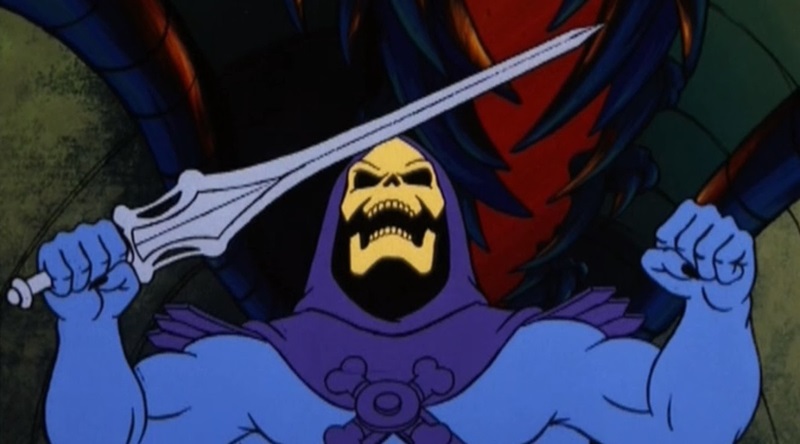Timeless Lessons from Eternia: How ‘He-Man’ Shaped a Generation’s Values
A Metaphor for Modern Struggles
“He-Man and the Masters of the Universe,” commonly referred to simply as “He-Man,” was a popular animated television series that aired in the 1980s. The show was set in the fictional world of Eternia, a planet of magic, fantasy, and technology.
Main Character: The series follows the adventures of Prince Adam, the young prince of Eternia. When he holds aloft his magic sword and says, “By the power of Grayskull, I have the power!” he transforms into He-Man, the most powerful man in the universe. As He-Man, he gains incredible strength, courage, and a range of abilities to combat evil.
Supporting Characters:
- Battle Cat: Prince Adam’s cowardly pet tiger, Cringer, transforms into the mighty Battle Cat when Adam becomes He-Man.
- Teela: The captain of the royal guard and a close ally of He-Man.
- Man-At-Arms (Duncan): The royal family’s weapons master and a father figure to Prince Adam. He is also an inventor and mentor.
- Orko: A small, floating magician from the dimension of Trolla, often providing comic relief.
Antagonist: The main villain of the series is Skeletor, a sorcerer with a skull-like face. Skeletor aims to conquer Eternia and gain the secrets of Castle Grayskull to become the master of the universe. He is often thwarted by He-Man and his allies.
Setting: The primary setting is Castle Grayskull, a mystical fortress of great power and secrets. It is the source of He-Man’s power and is guarded by the Sorceress, a magical protector.

“He-Man and the Masters of the Universe” became a cultural phenomenon, spawning a vast array of merchandise, including action figures, comic books, and spin-off series. The show is remembered for its vibrant characters, imaginative world, and the iconic transformation sequence of Prince Adam into He-Man.
Themes: Each episode typically revolves around a moral lesson, with He-Man and his friends teaching values such as bravery, honesty, and friendship. The show often concluded with a brief segment where characters would speak directly to the audience, reinforcing the episode’s lesson.
Skeletor, as depicted in “He-Man and the Masters of the Universe,” can be seen as a metaphor for contemporary villains, including terrorists, in several ways. By examining the characteristics and motivations of Skeletor, we can draw parallels to modern threats and explore the broader narrative of good triumphing over evil, reminiscent of the Christian story.
Skeletor as a Metaphor for Modern Villains
Motivation and Goals:
- Skeletor: Skeletor seeks power, control, and domination over Eternia, embodying the archetype of a tyrant who uses fear, manipulation, and brute force to achieve his ends.
- Terrorists: Modern terrorists often pursue power and influence through violence, fear, and coercion. Their goals may include political, ideological, or religious dominance, paralleling Skeletor’s relentless pursuit of control.
Tactics and Methods:
- Skeletor: He uses dark magic, deceit, and a loyal band of henchmen to execute his plans. He frequently targets key symbols of power, like Castle Grayskull, to destabilize and demoralize his enemies.
- Terrorists: Terrorist groups employ tactics such as bombings, kidnappings, and cyber-attacks to create chaos and instill fear. They often aim to undermine societal structures and symbols of authority.
Psychological Warfare:
- Skeletor: Beyond physical confrontations, Skeletor engages in psychological warfare, seeking to break the spirit and resolve of He-Man and his allies.
- Terrorists: Modern terrorists similarly rely on psychological impact, spreading fear and uncertainty to weaken societal resilience and sow discord.
The Christian Narrative of Good Over Evil
The narrative arc in “He-Man” aligns with the Christian story of good prevailing over evil in several fundamental ways:
The Heroic Savior:
- He-Man: As the champion of good, He-Man symbolizes hope, strength, and justice. His transformation from Prince Adam represents the potential within all to rise against evil.
- Christianity: Jesus Christ is viewed as the savior who overcomes sin and evil through sacrifice and resurrection, embodying ultimate goodness and divine justice.
Moral Lessons and Redemption:
- He-Man: Each episode imparts moral lessons, emphasizing virtues like courage, honesty, and compassion. The show suggests that even the seemingly weakest (Prince Adam) can become powerful forces for good.
- Christianity: The Christian faith teaches that good will triumph over evil through adherence to moral principles, forgiveness, and redemption. It highlights the transformative power of faith and goodness.
Victory of Light Over Darkness:
- He-Man: Despite numerous battles and setbacks, He-Man consistently defeats Skeletor, reinforcing the idea that good will ultimately prevail over evil.
- Christianity: The Bible conveys the triumph of light over darkness, particularly in the resurrection of Christ, symbolizing the ultimate victory of good over evil.
Conclusion
In drawing parallels between Skeletor and modern villains such as terrorists, we can see a reflection of timeless themes of power, fear, and the struggle between good and evil. The enduring appeal of “He-Man” lies in its affirmation of moral values and the assurance that good will prevail, resonating with the Christian narrative of redemption and the ultimate triumph of light over darkness. These stories provide both comfort and inspiration, reinforcing the belief that no matter the strength of evil, goodness, and justice will eventually emerge victorious.